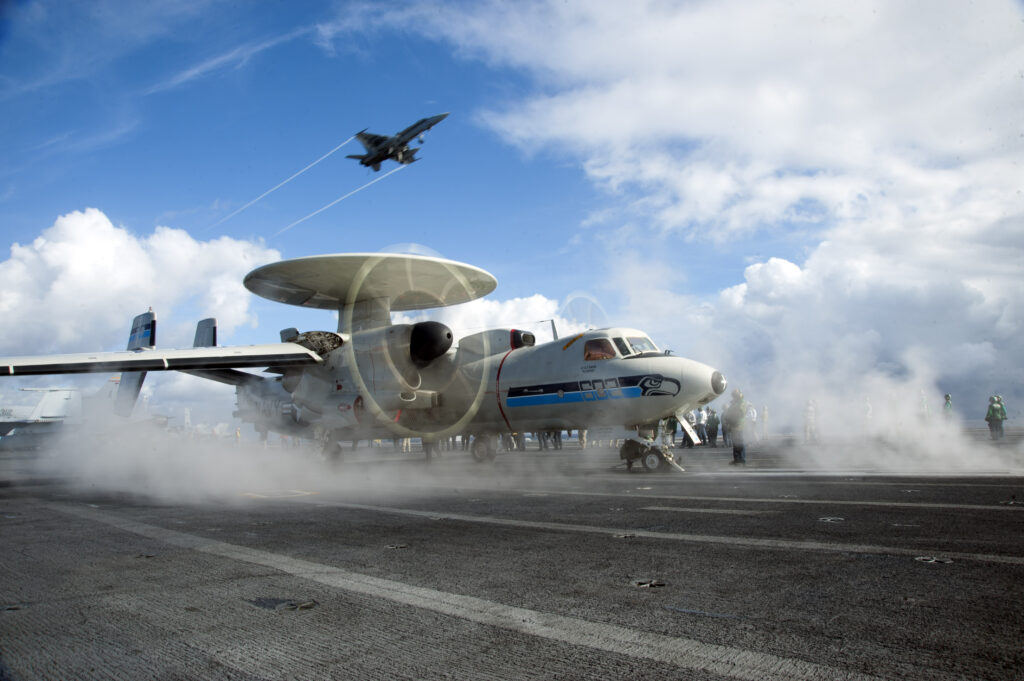
E-2C Hawkeye radar reconnaissance plane aboard the carrier USS Truman.
WASHINGTON: For the first time, four combatant commands are linking up to share real-time data during a homeland defense exercise designed to stop an enemy aircraft breaking into US airspace. The drill, which kicked off this week, marks an early test of the Pentagon’s emerging effort to quickly share data and operate against advanced threats across sea and air domains.
The May 28-31 exercise taking place off the US East Coast is being run by Northern Command and involves Space, Transportation and Strategic commands, along with the Navy’s 2nd Fleet.
At the center of the exercise is a B-1B attempting to punch into US airspace, while Canadian CF-18s and US F-15s, fueled by KC-135 Stratotankers, run an air intercept exercise in conjunction with F/A-18 fighters from the USS Harry S Truman.
All participants will use Link 16, a tactical data system which allows parties to share real-time command and control data, to stitch together the disparate elements at air and sea.
“Leading complex multi-combatant command operations across multiple domains demonstrates our readiness to defend our homeland,” Northcom commander Gen. Terrence O’Shaughnessy, said in a statement.
While NORTHCOM will run the exercise and control the Truman strike group, the Canadian planes and US F-15s are under NORAD control, STRATCOM provides the B-1B, and TRANSCOM handles the aerial refueling portion of the operation. The newly-formed Spacecom will run space operations to support the 2nd Fleet commander through satellite communications and GPS.
The Truman carrier strike group, which includes the cruiser USS Normandy, is adding another mission to its extended six-month deployment, after having left Norfolk in November for its third overseas cruise in the past four years. The strike group has been in a holding pattern off the East Coast for weeks to keep the crew away from port and potential COVID-19 infections.
“Today, there is not a joint operation that doesn’t integrate space capabilities – the pervasiveness of these capabilities and the information they provide is a key ingredient to how American forces operate with unmatched speed, precision, and lethality,” Gen. John Raymond, commander of the Space Command said in a statement.
China’s new H-20 stealth bomber ‘not really’ a concern for Pentagon, says intel official
“The thing with the H-20 is when you actually look at the system design, it’s probably nowhere near as good as US LO [low observable] platforms, particularly more advanced ones that we have coming down,” said a DoD intelligence official.


























